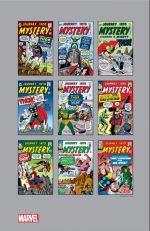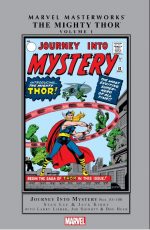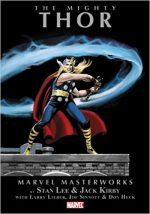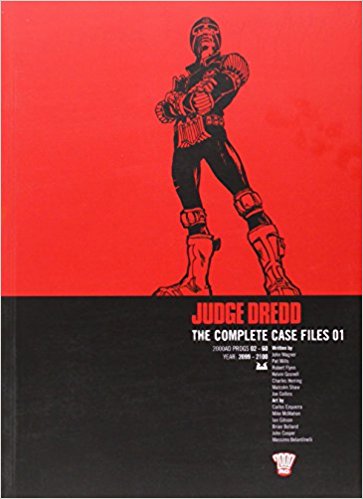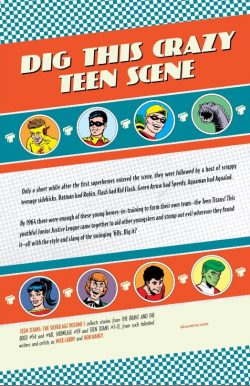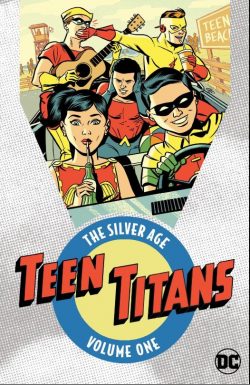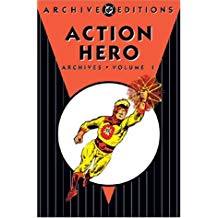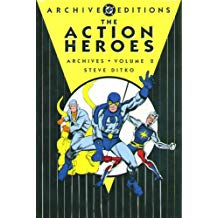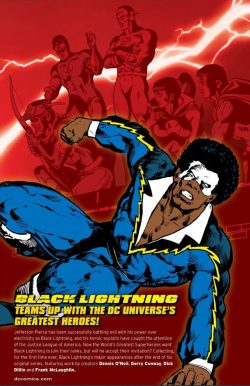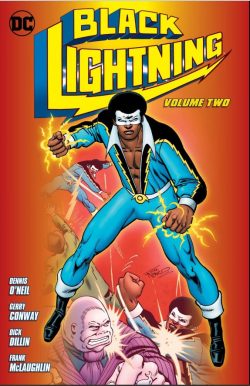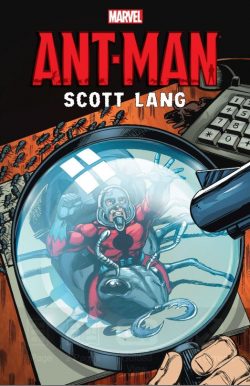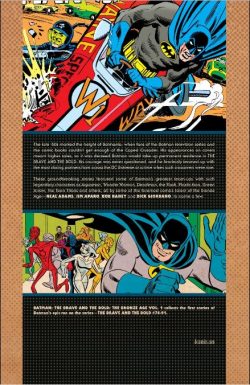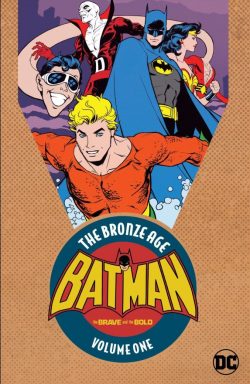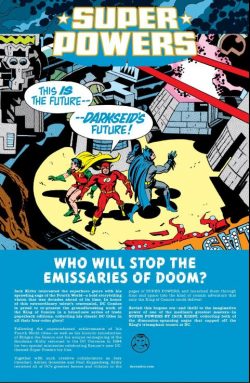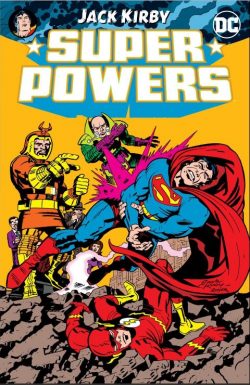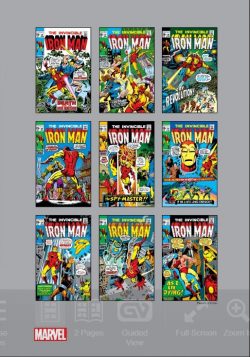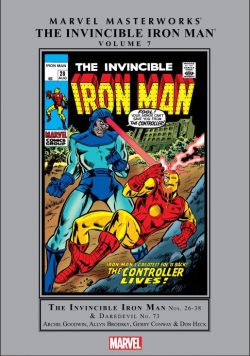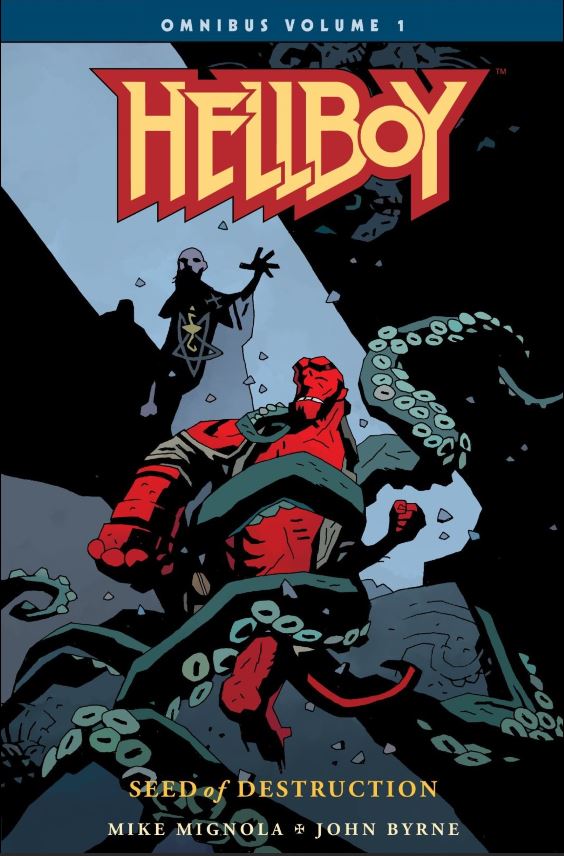
By Mike Mignola, with John Byrne, Mark Chiarello, Matt Hollingsworth, James Sinclair, Dave Stewart, Pat Brosseau & various (Dark Horse Books)
ISBN: 978-1-50670-666-5Â Â Â Â Â Â Â Â Â Â Â Â Â Â Â Â Â eISBN: 978-1-50670-687-0
Hellboy was first seen 25 years ago in the 1993 San Diego Comic Con programme. Happy Birthday, Big Red.
After the establishment of the comicbook direct market system, there was a huge outburst of independent publishers in America and, as with all booms, a lot of them went bust. Some few however were more than flash-in-the-pans and grew to become major players in the new world order.
Arguably, the most successful was Dark Horse Comics who fully embraced the shocking new concept of creator ownership (amongst other radical ideas). This concept – and their professional outlook and attitude – drew a number of big name creators to the new company and in 1994 Frank Miller & John Byrne formally instituted the sub-imprint Legend for those projects major creators wanted to produce their own way and at their own pace.
Over the next four years the brand counted Mike Mignola, Art Adams, Mike Allred, Paul Chadwick, Dave Gibbons and Geof Darrow amongst its ranks; generating a wealth of superbly entertaining and groundbreaking series and concepts. Unquestionably the most impressive, popular and long-lived was Mignola’s supernatural thriller Hellboy.
As previously cited, the monstrous monster-hunter debuted in San Diego Comic-Con Comics #2 (August 1993) before formally launching in 4-issue miniseries Seed of Destruction (with Byrne scripting over Mignola’s plot and art). Colourist Mark Chiarello added layers of mood with his understated hues.
That story and the string of sequels that followed are re- presented here in a new trade paperback offering earliest longform triumphs of the Scourge of Sheol – The Wolves of Saint August; The Chained Coffin; Wake the Devil and Almost Colossus – in the first of an omnibus sequence to be accompanied by a companion series of tomes featuring all the short stories.
Crafted by Mignola, scripter John Byrne and colourist Mark Chiarello, the incredible story begins with a review of secret files. On December 23rd 1944 American Patriotic Superhero The Torch of Liberty and a squad of US Rangers interrupted a satanic ritual predicted by Allied parapsychologist Professors Trevor Bruttenholm and Malcolm Frost.
They were working in conjunction with influential medium Lady Cynthia Eden-Jones. They were all waiting at a ruined church in East Bromwich, England when a demon baby with a huge stone right hand appeared in a fireball. The startled soldiers took the infernal yet seemingly innocent waif into custody.
Far, far further north, off the Scottish Coast on Tarmagant Island, a cabal of Nazi Sorcerers roundly berated ancient wizard Grigori Rasputin whose Project Ragna Rok ritual seemed to have failed. The Russian was unfazed. Events were unfolding as he wished…
Five decades later, the baby has grown into a mighty warrior engaging in a never-ending secret war: the world’s most successful paranormal investigator. Bruttenholm has spent the years lovingly raising the weird foundling whilst forming an organisation to destroy unnatural threats and supernatural monsters – The Bureau for Paranormal Research and Defense. “Hellboy†is now its lead agent…
Today, the recently-returned, painfully aged professor summons his surrogate son and warns him of impending peril wrapped in obscured reminiscences of his own last mission. The Cavendish Expedition uncovered an ancient temple submerged in arctic ice, but what occurred next has been somehow stricken from Bruttenholm’s memory. Before he can say more the mentor is killed by a rampaging plague of frogs and enraged Hellboy is battling for his life against a demonic giant amphibian…
Following fact-files about Project Ragna Rok and ‘An African Myth about a Frog’ Chapter Two opens at eerie Cavendish Hall, set on a foetid lake in America’s Heartland. Matriarch Emma Cavendish welcomes Hellboy and fellow BPRD investigators Elizabeth Sherman and Dr. Abraham Sapien but is not particularly forthcoming about her family’s obsession.
Nine generations of Cavendish have sought for and sponsored the search for the Temple at the Top of the World. Three of her own sons were lost on the latest foray, from which only Bruttenholm returned, but her story of how founding patriarch Elihu Cavendish‘s obsession infected every male heir for hundreds of years imparts no fresh insights.
She also says she knows nothing about frogs, but she’s lying and the agents know it…
As they retire for the night, Hellboy’s companions prepare for battle. Liz is a psychic firestarter but is still taken unawares when the frogs attack and the Dauntless Demon fares little better against another titanic toad-monster.
Of Abe there is no sign: the BPRD’s own amphibian has taken to the dank waters of the lake in search of long-buried answers…
And then a bald Russian guy claiming to know the truth of Hellboy’s origins appears and monstrous tentacles drag the hero through the floor…
Chapter Three opens in a vast hidden cellar where Rasputin explains he is the agent for undying and infinite antediluvian evil: seven-sided serpent Ogdru-Jahad who sleeps and waits to be reawakened. Hellboy was summoned from the pit to be the control interface between the great beast and the wizard as he oversaw the fall of mankind, but when the BPRD agent refuses his destiny – in his own obtuse, obnoxious manner – Rasputin goes crazy…
Overwhelmed by the Russian’s frog servants, Hellboy is forced to listen to the story of Rasputin’s alliance with Himmler and Hitler and how they sponsored a mystic Nazi think-tank to conquer the Earth. Of how the mage manipulated the fanatics, found the Temple at the Top of the World and communed with The Serpent and of how the last Cavendish Expedition awoke him. Of how he used them to trace the crucial tool he had summoned from Hell half a century ago…
And then the raving Russian reveals how his infernal sponsor Sadu-Hem – intermediary of The Serpent – has grown strong on human victims but will become unstoppable after feasting on Liz’s pyrokinetic energies…
With all hell literally breaking loose, the final chapter finds Rasputin exultantly calling upon each of the seven aspects as Hellboy attempts a desperate, doomed diversion and the long-missing Abe Sapien finally makes his move, aided by a hidden faction Rasputin had not anticipated…
The breathtaking conclusion sees the supernal forces spectacularly laid to rest, but the defeat of Sadu-Hem and his Russian puppet only opens the door for other arcane adversaries to emerge…
Bombastic, moody, laconically paced, suspenseful and explosively action-packed, Seed of Destruction manages the masterful magic trick of introducing a whole new world and making it seem like we’ve always lived there.
‘The Wolves of Saint August’ originally ran in Dark Horse Presents #88-91 during 1994, before being reworked a year later for the Hellboy one-shot of the same name. Mignola handles art and script with James Sinclair on colours and Pat Brosseau making it all legible and intelligible.
Set contemporarily, the moody piece sees the red redeemer working with BPRD colleague Kate Corrigan to investigate the death of Hellboy’s old friend Father Kelly in the Balkan village of Griart. It’s not long before they realise the sleepy hamlet is a covert den of great antiquity where a pack of mankind’s most infamous and iniquitous predators still thrive…
Mignola has a sublime gift for setting tone and building tension with great economy. It always means that the inevitable confrontation between Good and Evil has plenty of room to unfold with capacious visceral intensity. This clash between unfrocked demon and alpha lycanthrope is one of the most unforgettable battle blockbusters ever seen…
In 1995 Dark Horse Presents 100 #2 debuted ‘The Chained Coffin’. Here Hellboy returns to the English church where he first arrived on Earth in 1943. Fifty years of mystery and adventure have passed, but as the demon-hunter observes ghostly events replay before his eyes he learns the truth of his origins. All too soon, Hellboy devoutly wishes he had never come back…
Wake the Devil offered a decidedly different take on the undying attraction of vampires when a past case suddenly became active again. Hellboy and fellow outré BPRD agents Liz Sherman and Abe Sapien were still reeling from losing their aged mentor whilst uncovering mad monk Rasputin’s hellish scheme to rouse sleeping Elder Gods he served.
Moreover, the apparently undying wizard – agent for antediluvian infinitely evil seven-sided serpent Ogdru-Jahad who-sleeps-and-waits-to-be-reawakened – was responsible for initially summoning Hellboy to Earth as part of the Nazi’s Ragna Rok Project …
Now the Russian’s clandestine alliance with Himmler, Hitler and their mystic Nazi think-tank is further explored, as somewhere deep inside Norway’s Arctic Circle region, a driven millionaire visits a hidden castle.
He is seeking the arcane Aryans long-closeted within, eager to deliver a message from “The Masterâ€. In return the oligarch wants sanctuary from the imminent end of civilisation…
In New York City a bloody robbery occurs in a tawdry mystic museum and the BPRD are soon being briefed on legendary Napoleonic soldier Vladimir Giurescu. It now appears that the enigmatic warrior wasn’t particularly wedded to any side in that conflict and was probably much older than reports indicated…
More important is the re-examined folklore which suggests Giurescu was mortally wounded many times but, after retreating to a certain castle in his homeland, would always reappear: renewed, refreshed and deadlier than ever.
In 1882 he was in England and clashed with Queen Victoria’s personal ghost-breaker Sir Edward Grey, who was the first to officially identify him as a “Vampireâ€. In 1944 Hitler met with Vladimir to convince the creature to join him, but something went wrong and Himmler’s envoy Ilsa Haupstein was ordered to arrest Giurescu and his “familyâ€.
The creatures were despatched in the traditional manner and sealed in boxes… one of which has now been stolen from that museum. Moreover, the murdered owner was once part of the Nazi group responsible for Ragna Rok…
The BPRD always consider worst-case scenarios, and if that box actually contained vampire remains…
The location of the bloodsucker’s fabled castle is unknown, but with three prospects in Romania and only six agents available, three compact strike-teams are deployed with Hellboy in solo mode headed for the most likely prospect…
Although not an active agent, Dr. Kate Corrigan wants Hellboy to take especial care. All the indications are that this vampire might be the Big One, even though nobody wants to use the “D†word…
In Romania, somehow still youthful Ilsa Haupstein is talking to a wooden box, whilst in Norway her slyly observing colleagues Kurtz and Kroenen are concerned. Once the most ardent of believers, Ilsa may have been turned from the path of Nazi resurgence and bloody vengeance…
Her former companions are no longer so enamoured of the Fuehrer’s old dream of a vampire army either. Leopold especially places more faith in the creatures he has been building and growing…
Over Romania, Hellboy leaps out of the plane and engages his experimental jet-pack, wishing he was going with one of the other teams… and even more so after it flames out and dies…
At least he has the limited satisfaction of crashing into the very fortress Ilsa is occupying…
The battle with the witch-woman’s grotesque servants is short and savage and as the ancient edifice crumbles, Chapter Two reveals how on the night Hellboy was born, Rasputin suborned Ilsa and her companions…
He made them his devout disciples for the forthcoming awakening of Ogdru-Jahad, saving them from Germany’s ignominious collapse. Now the Russian’s ghost appears to her and offers another prophecy and a great transformation…
Deep in the vaults, Hellboy comes to and meets a most garrulous dead man, unaware that in the village below the Keep the natives are recognising old signs and making all the traditional preparations again…
Hellboy’s conversation provides lots of useful background information but lulls him into a false sense of security, allowing the revenant to brutally attack and set him up for a confrontation with the ferocious forces actually responsible for the vampire’s power…
Battling for his life, Hellboy is a stunned witness to Giurescu’s resurrection and ultimate cause of his latest demise, whilst far above, Rasputin shares his own origins with acolyte Ilsa, revealing the night he met the infamous witch Baba Yaga…
Nearly three hundred miles away, Liz and her team are scouring the ruins of Castle Czege. There’s no sign of vampires but they do uncover a hidden alchemy lab with an incredible artefact in it…a stony homunculus.
Idly touching the artificial man Liz is horrified when her pyrokinetic energies surge uncontrollably into the creature and it goes on a destructive rampage…
With the situation escalating at Castle Giurescu, Hellboy decides to detonate a vast cache of explosives with the faint hope that he will be airlifted out before they go off but is distracted by a most fetching monster who calls him by a name he doesn’t recognise before trying to kill him.
If she doesn’t, the catastrophic detonation might…
As the dust settles and civil war breaks out amongst the Norway Nazis, in Romania Ilsa makes a horrific transition and Hellboy awakes to face Rasputin, even as the BPRD rush to the rescue.
Tragically Abe Sapien and his squad won’t make it before the revived and resplendent Giurescu takes his shot and the world’s most successful paranormal investigator is confronted and seduced by uncanny aspects of his long-hidden infernal ancestry…
With all hell breaking loose, the displaced devil must make a decision which will not only affect his life but dictate the course of humanity’s existence…
The breathtakingly explosive ending also resets the game for Rasputin’s next scheme, but the weird wonderment rolls on in a potent epilogue wherein the mad monk visits his macabre patron Baba Yaga for advice…
The story-portion of this magnificent terror-tome concludes with 1997’s 2-part miniseries ‘Almost Colossus’ wherein traumatised pyrokinetic Liz awaits test results.
During her mission to Castle Czege the artificial man she discovered inadvertently drained Liz’s infernal energies, bringing it to life and causing hers to gradually slip away. Now, Hellboy and Corrigan are back in that legend-drenched region, watching a graveyard from which 68 bodies have been stolen…
Elsewhere, the fiery homunculus is undergoing a strange experience: he has been abducted by his older “brother†who seeks, through purloined flesh, blackest magic and forbidden crafts to perfect their centuries-dead creator’s animation techniques.
Before the curtain falls, Hellboy, aided by the ghosts of repentant monks and the younger homunculus, is forced to battle a metal giant determined to crown itself the God of Science, saving the world if he can and Liz because he must…
Wrapping up the show are a wealth of arty extras, beginning with the 1991 convention illustration he created because he wanted to draw a monster. From tiny acorns…
Following on – with author’s commentary – is a horror hero group shot that is Hellboy’s second ever appearance and a brace of early promo posters, and the full colour Convention book premiere appearance as ‘Hellboy – World’s Greatest Paranormal Investigator’ battles a giant demon dog, courtesy of Mignola & Byrne.
Hellboy Sketchbook then shares a treasure trove of drawings, designs and roughs from the early stories again, fully annotated to round out the eerie celebratory experience.
Available in paperback and digital formats, this bombastic, moody, suspenseful and explosively action-packed tome is a superb scary romp to delight one and all, celebrating the verve, imagination and, now, longevity of the greatest Outsider Hero of All: a supernatural thriller no comics fan should be without.
Hellboy™ Seed of Destruction © 1993, 2018 Mike Mignola. Hellboy, Abe Sapien, Liz Sherman and all other prominently featured characters are trademarks of Mike Mignola. All rights reserved.

